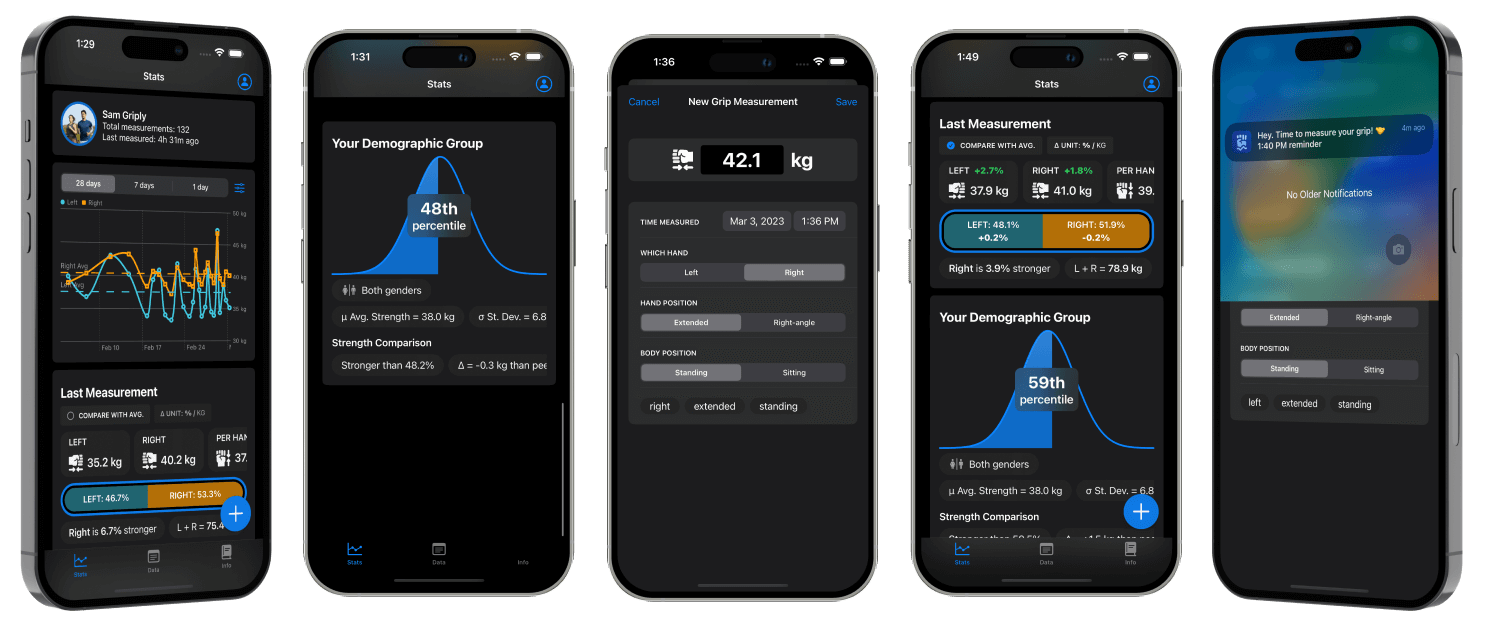Getting consistent and comparable results
If you want to have comparable results, the key is to have a consistent form. There are small differences in performing the measurement standing vs. sitting, with extended elbow vs. with elbow at right-angle. To ensure that the differences you see in your own measurements are not due to the changes in your form, it is best not to change your form from one measurement to the other unless necessary. This will allow you to monitor your own progress reliably.
Strongest results
In healthy adults the strongest grip is measured in the standing position with straight elbow, hand pointing downwards. It is also the easiest position to perform without anyone having to check you have proper form.
Best for older population
Grip strength is often measured for assessing sarcopenia in older people. As they might have difficulty standing, generally physical therapists prefer to perform grip measurement with the person sitting with their elbow at right-angle. This way the therapist can more easily ensure consistent form and the person doing the measurement can focus only on squeezing the dynamometer if standing is not easy for them.
Demographic comparison
Different population surveys have used different form instructions for measuring grip strength. For example:
- NHANES study: Standing, with extended elbow.1
- NIH toolbox: Sitting, with elbow at right-angle.2
- SOEP: Standing, with elbow at right-angle.3
References
- National Health and Nutrition Examination Survey Examination Protocol. 2013 Muscle Strength Procedures Manual, page 3-16.
- NIH Toolbox Training Manual, September 2012, page 126.
- Handgreifkraftmessung im Sozio-oekonomischen Panel (SOEP) 2006 und 2008, page 36.


